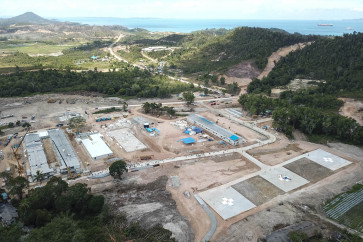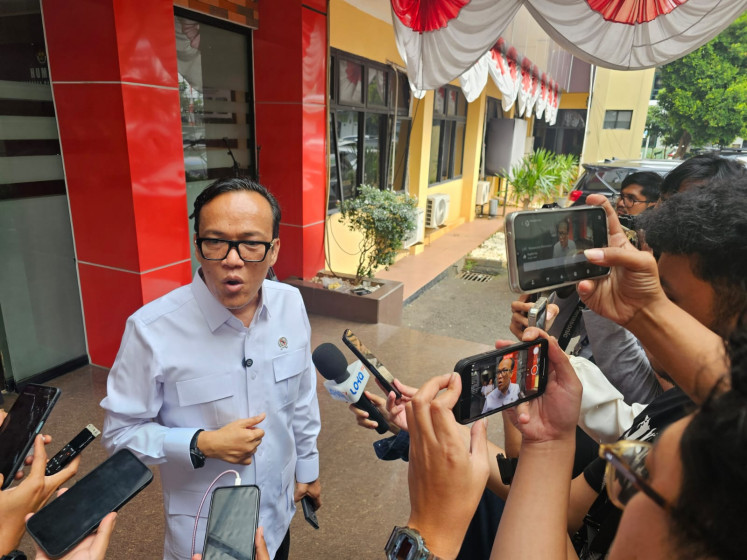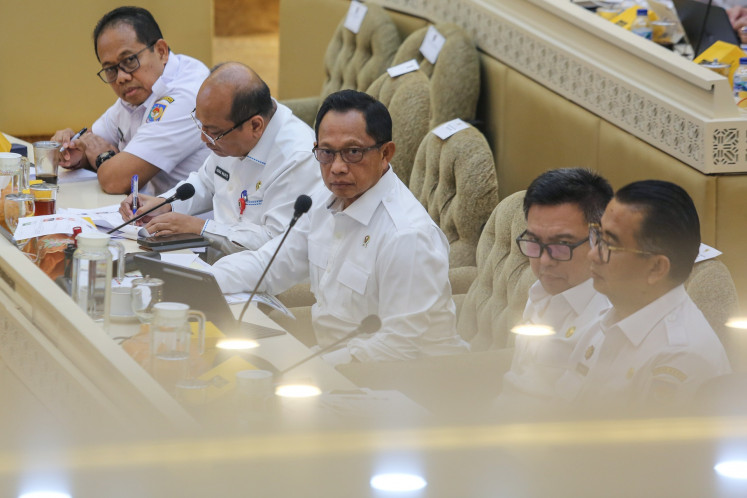Popular Reads
Top Results
Can't find what you're looking for?
View all search resultsPopular Reads
Top Results
Can't find what you're looking for?
View all search resultsWeak consumption poses threat
The weak growth in household spending, which has remained under the psychological level of 5 percent for many months now, could be a sign of a challenging second quarter for the economy.
Change text size
Gift Premium Articles
to Anyone
T
he government would be wise to boost household consumption, the country’s biggest economic engine, as the component has continued to show signs of a weak recovery in the first three months of the year, experts have said.
Household spending, which accounted for more than half of the gross domestic product (GDP) of Southeast Asia’s largest economy, grew by 4.95 percent year-on-year (yoy) during the first quarter of 2018, a slight increase from the 4.94 percent recorded in the same period last year.
The slight increase in consumption contributed to the country’s overall GDP growth, which expanded by 5.06 percent yoy in the first quarter of this year, the Central Statistics Agency (BPS) stated on Monday.
The overall GDP growth was slightly higher than the 5.01 percent and 4.94 percent booked in the corresponding periods of 2017 and 2016, respectively.
The weak growth in household spending, which has remained under the psychological level of 5 percent for many months now, could be a sign of a challenging second quarter for the economy, said Gadjah Mada University (UGM) economist Tony Prasetiantono.
Aside from stagnant consumption, Tony said there was fear of ongoing rupiah depreciation, which could exert pressure on inflation and the government’s fuel subsidy budget.
“Fiscal conditions will be under pressure; I think the targeted 5.4 percent [in GDP growth this year] will be difficult to achieve and 5.3 percent is more realistic,” he said on Monday, adding that maintaining a positive trend was of the utmost importance for the government.
The government set a GDP growth target at 5.4 percent this year as outlined in the 2018 state budget, higher than the 5.2 percent targeted in 2017.
The weak growth in household consumption, which traditionally expands by more than 5 percent, was primarily caused by a shift in the country’s harvest season from the first quarter to the second, said Bank Permata economist Josua Pardede.
“[The Islamic festivity of] Idul Fitri will come [in June] so we hope consumption will increase in the second quarter from the first one,” Josua said.
Coordinating Economic Minister Darmin Nasution previously said that because the harvest period might not be seen until the second quarter of this year, economic growth in the first three months might be slower than in the same period last year, when harvesting began in March.
The projection of a shift in the harvest period was partly caused by an upgrade in the digital data gathered by the BPS through a satellite imaging system, which was launched to help increase accuracy and reduce margins of error.
The change in harvest time could impact the overall economic growth calculation as the agriculture sector was the second-highest contributor to the GDP in the first quarter of 2018 with a 13.26 percent share, BPS data shows.
Darmin said on Monday that the era of high consumption was over and called for the country to instead focus on boosting investment and exports.
Growth in investment might have indeed saved the day as the component, the second-largest contributor to the GDP after consumption, grew by 7.95 percent yoy during the first quarter this year, almost double the 4.77 percent yoy seen in the same period of 2017.
The investment figure was also better than the 7.27 percent yoy growth booked during the fourth quarter of 2017.
Finance Minister Sri Mulyani Indrawati stressed Monday that the government would continue developing programs to boost investment and exports.
The increase in investment is projected to continue triggering imports, which grew by 12.75 percent yoy in the first quarter this year, far exceeding the 4.81 percent booked during the same period in 2017.
“In the medium term, an increase in investment will absorb workforce, increase purchasing power and, eventually, jack up economic growth,” said Tony of UGM.
Yose Rizal Damuri, the head of the economic department at the Centre for Strategic and International Studies (CSIS), said a bigger investment amount would encourage higher household consumption and, eventually, overall economic growth in the long run.











